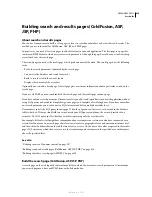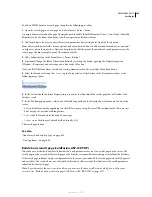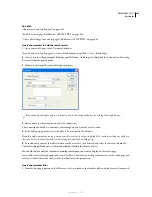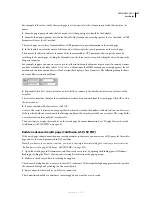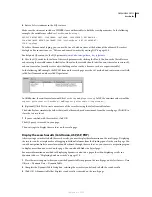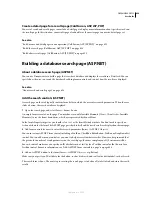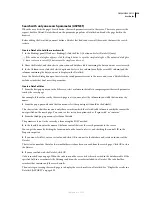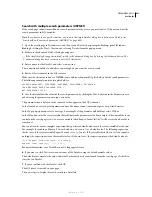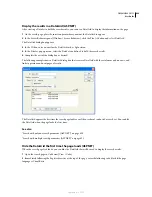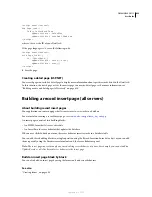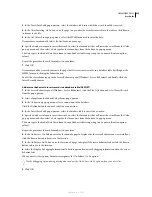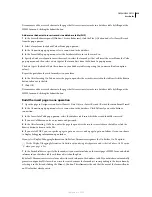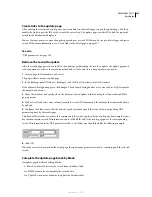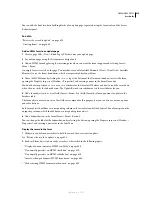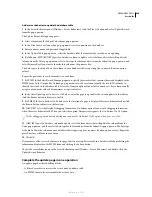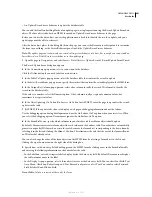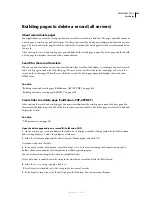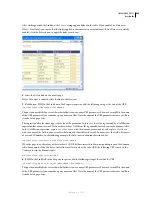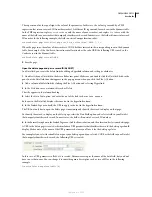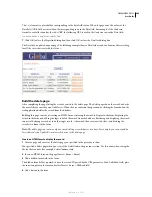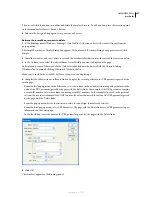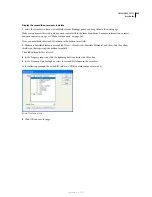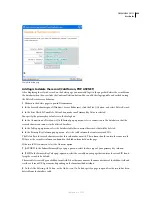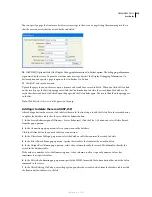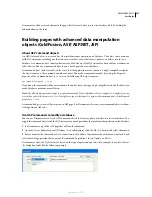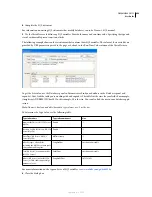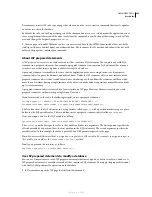
DREAMWEAVER CS3
User Guide
638
Create links to the update page
After creating the search and results pages, you create links on the results page to open the update page. You then
modify the links to pass the IDS of the records the user selects. The update page uses this ID to find the requested
record in the database and display it.
You use the same process to open the update page and pass a record ID that you do to open a detail page and pass a
record ID. For more information, see “Create links to the detail page” on page 617.
See also
“URL parameters” on page 533
Retrieve the record to update
After the results page passes a record ID to the update page identifying the record to update, the update page must
read the parameter, retrieve the record from the database table, and store it temporarily in a recordset.
1
Create a page in Dreamweaver and save it.
The page will become your update page.
2
In the Bindings panel (Window > Bindings), click the Plus (+) button and select Recordset.
If the advanced dialog box appears, click Simple. The advanced dialog box has a text area to enter SQL statements;
the simple one does not.
3
Name the recordset and specify where the data you want to update is located using the Connection and Table
pop-up menus.
4
Click Selected, and select a key column (usually the record ID column) and the columns that contain the data to
be updated.
5
Configure the Filter area so that the value of your key column equals the value of the corresponding URL
parameter passed by the results page.
This kind of filter creates a recordset that contains only the record specified by the results page. For example, if your
key column contains record ID information and is called PRID, and if the results page passes the corresponding
record ID information in the URL parameter called
id
, the Filter area should look like the following example:
6
Click OK.
When the user selects a record on the results page, the update page generates a recordset containing only the selected
record.
Complete the update page block by block
An update page has three building blocks:
•
A filtered recordset to retrieve the record from a database table
•
An HTML form to let users modify the record’s data
•
An Update Record server behavior to update the database table
September 4, 2007

